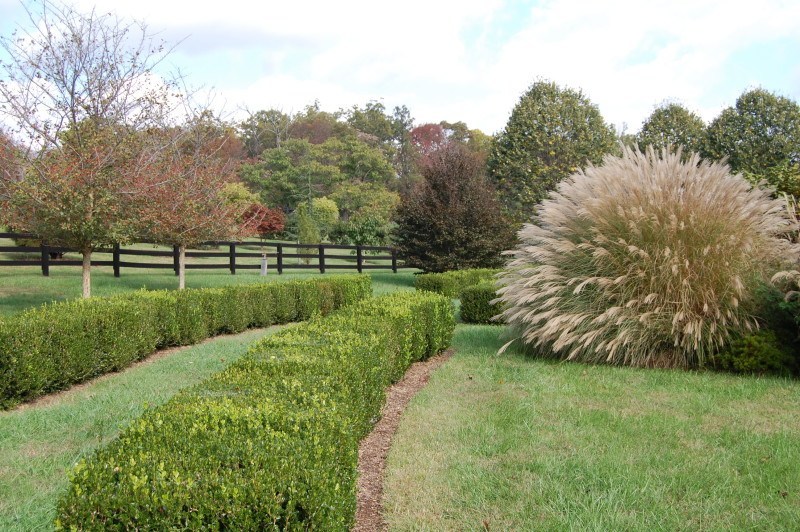LATE SPRING GARDEN CHORES
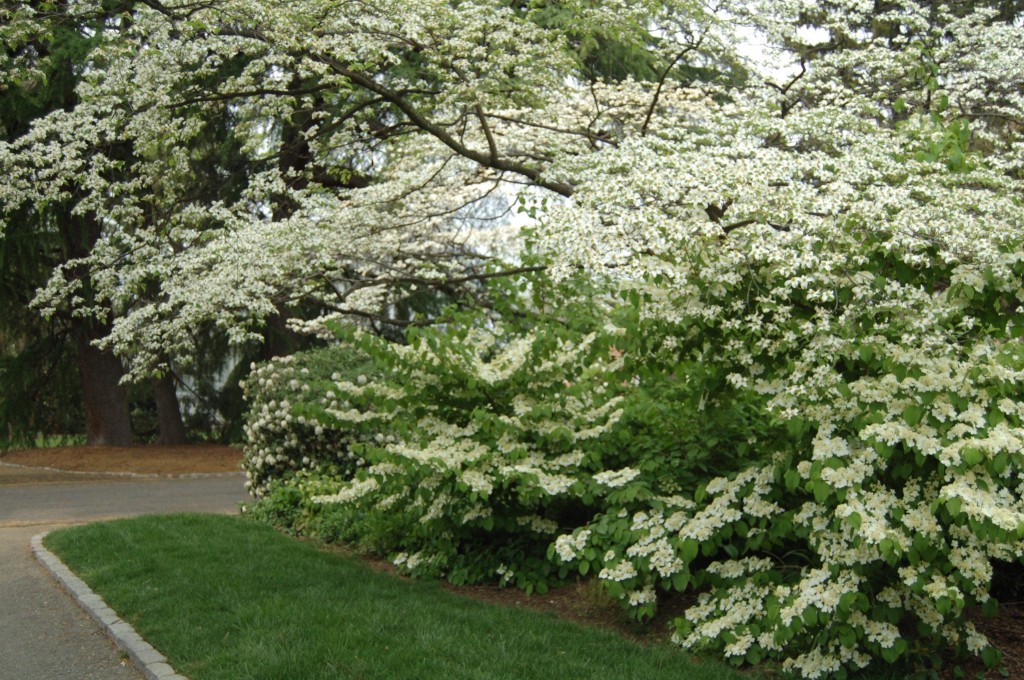
Most spring bulbs are spent, and spring flowering shrubs are shedding their blooms.
Thus, It’s time to:
PRUNE
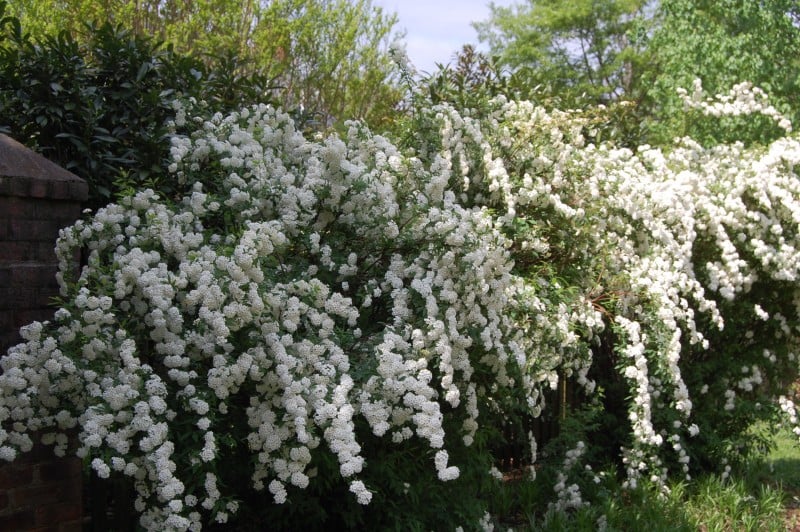
Prune spring-flowering shrubs, if needed.
Most shrubs and trees that flower in spring (like the Vanhouteii Spirea above, Lilac, Azaleas, and Deutzias, to name a few) begin to set their flower buds for next spring within 4 to 6 weeks of blooming. Thus, if you wait to prune the plant after that 4 to 6 week window, you will be cutting off next year’s blooms.
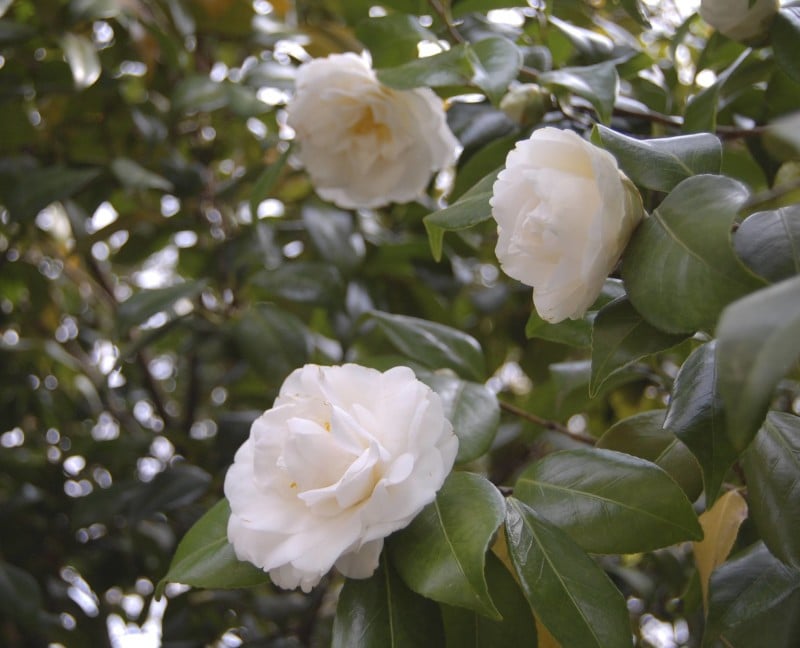
Only prune your shrubs if they need it to control size or to shape the plant (e.g., limb up or espalier) or to remove dead or diseased branches. Use hand pruners, and be sure to take a branch all the way back to a lateral branch (vs. shearing all of the top growth). Camellias (above) need very little pruning, as they have a graceful growing habit. Mock Orange (Philadelphus coronarius, below) is a straggly grower, and can use more help. Mock Oranges are best planted toward the back of a mixed border where they recede after blooming.
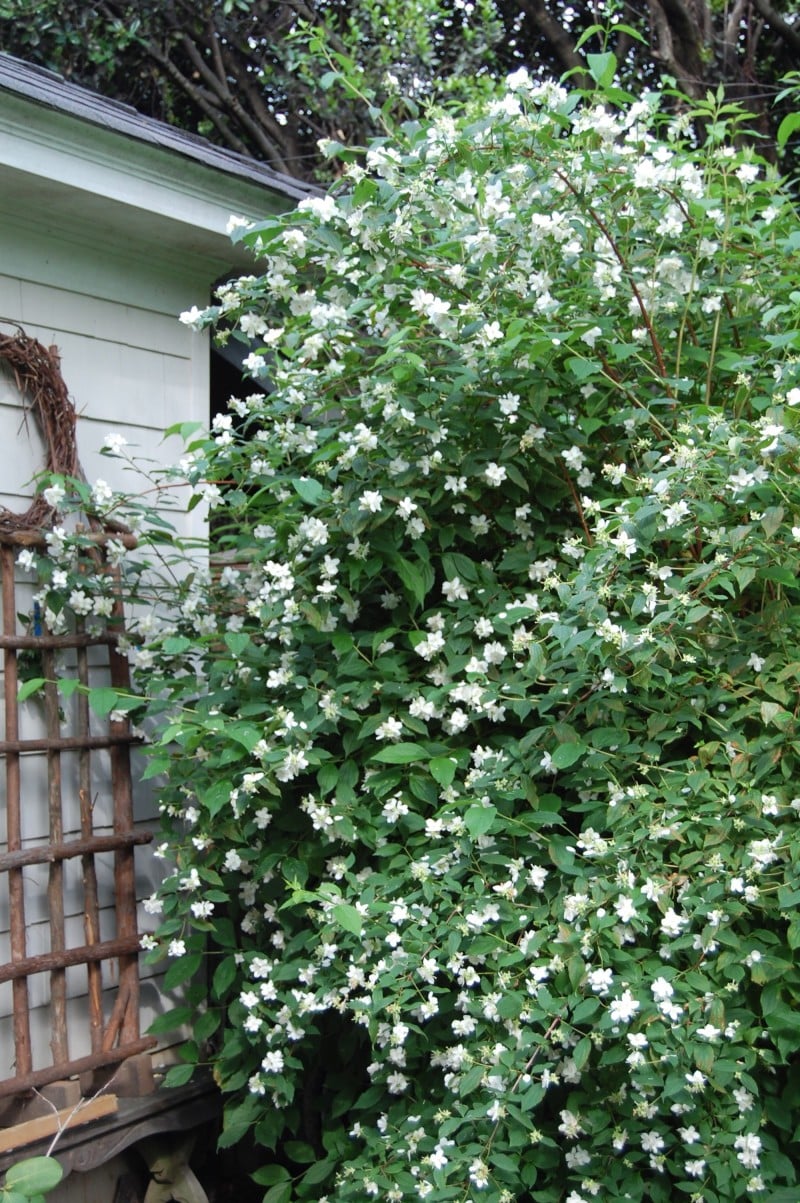
DON’T prune summer flowering shrubs, such as Gardenia, Butterfly Bush (Buddleia davidii), Caryopteris and Beautyberry (Callicarpa).
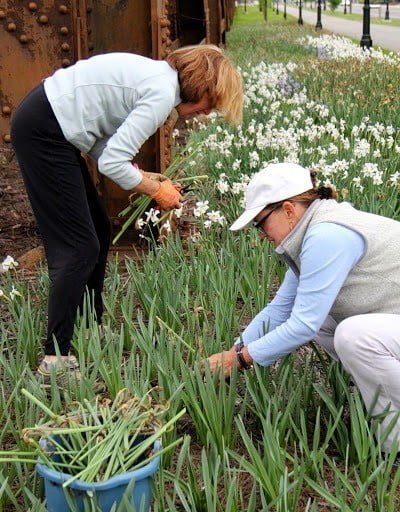
Cut back dying foliage of spring-blooming bulbs, including Daffodils, Tulips and Hyacinth. Capital Trees members Mary Anne Burke and Noni Baruch, above, deadhead the Daffodils planted along Dock Stree in Shockoe Bottom. Spanish Bluebells (beautifully photographed below by Helen Horseley) multiply over the years.
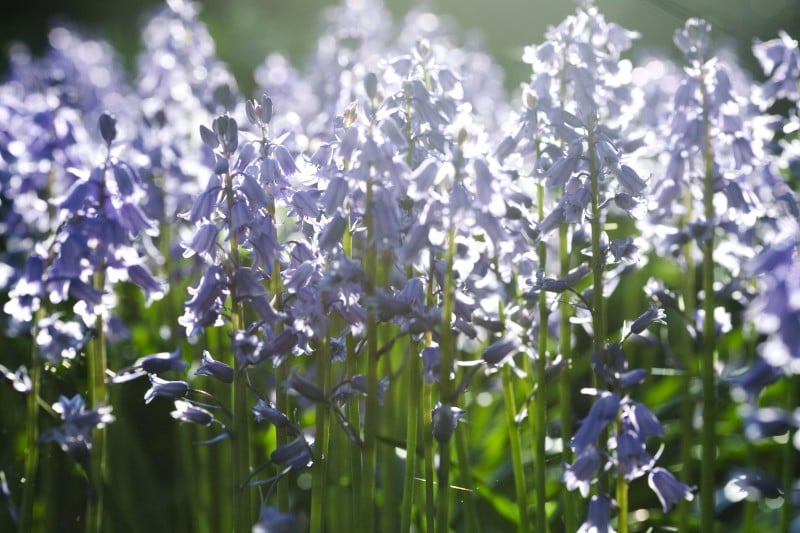
Photo by Helen Horsley
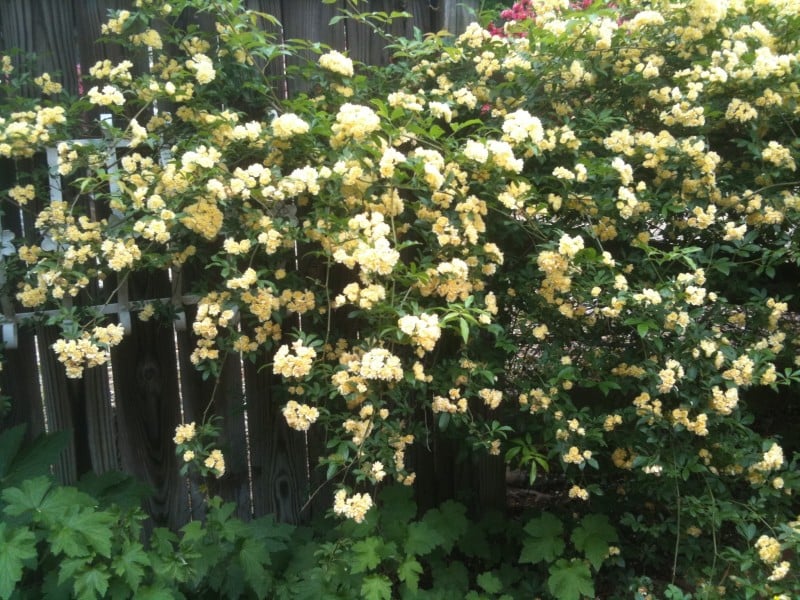
Cut out all rogue branches on your Lady Banks Rose (above). You can tell a rogue branch -or sucker – because it is thicker, straighter, and produces no lateral branches.
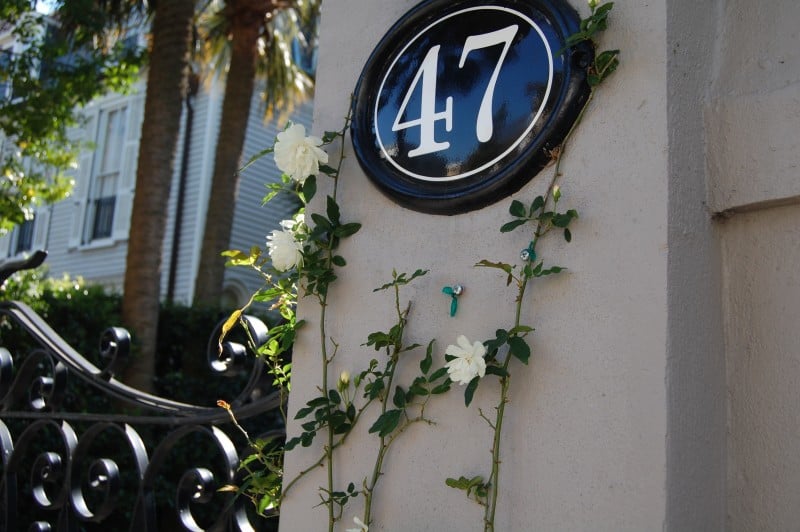
Continue to train other climbing roses. Don’t be shy about removing many older canes to allow for a lighter, more elegant climber, like the one in Charleston, above.
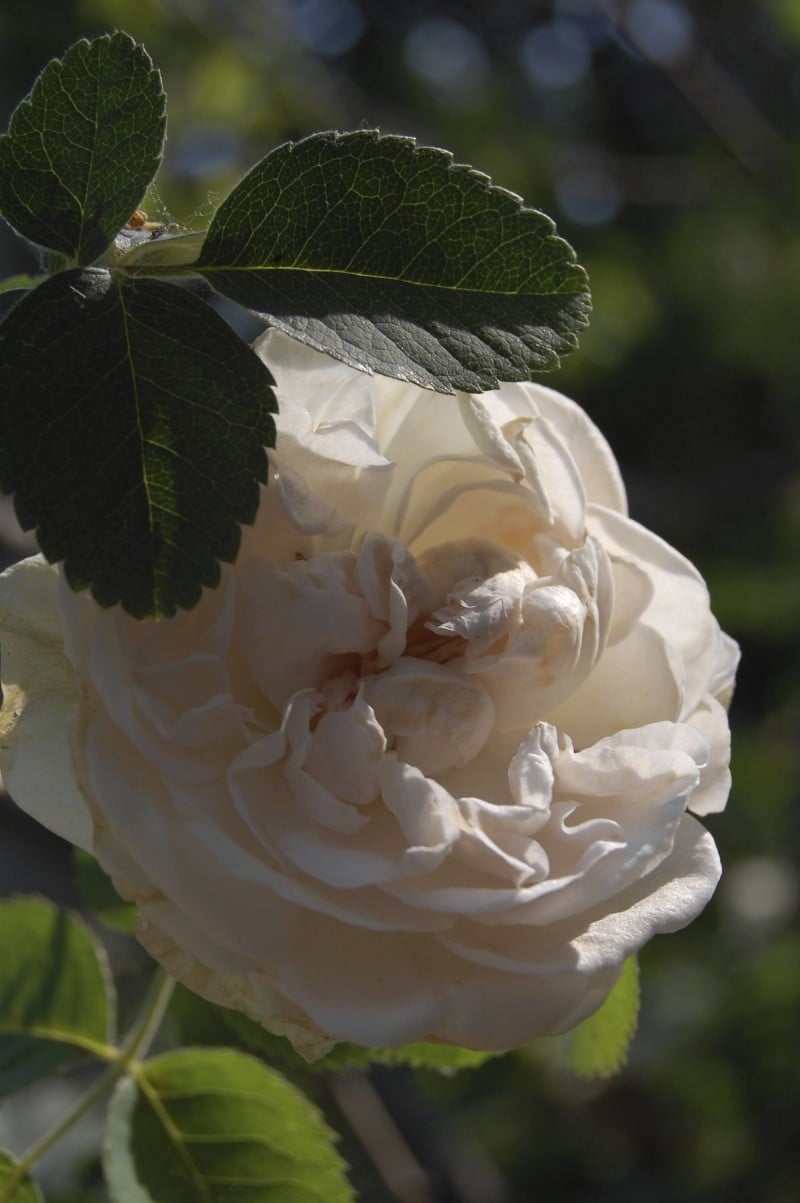
Continue to deadhead repeat-blooming shrub roses. Some of the heritage roses at Hollywood Cemetery, including the Doswell Rose, above, are still blooming. I did a blog post recently about the incredible treasure these roses are at the historic cemetery.
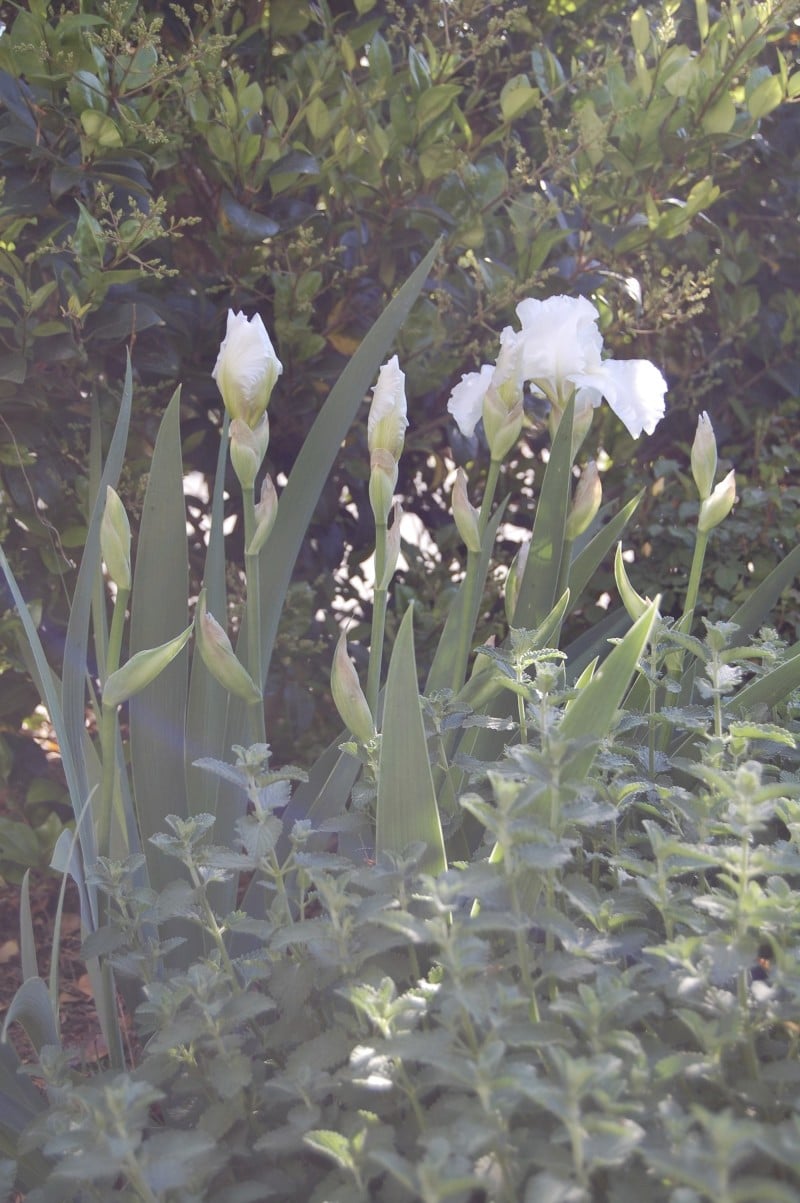
Remove spent flower stalks from perennials, such as Bearded Iris (Iris germanica), above, and Peonies (Paeonia), below. Some Bearded Iris will bloom again in late summer or early fall.
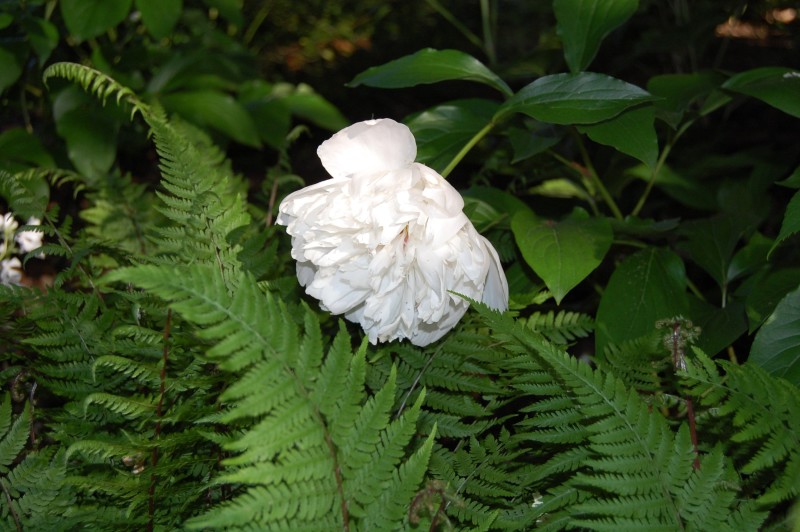
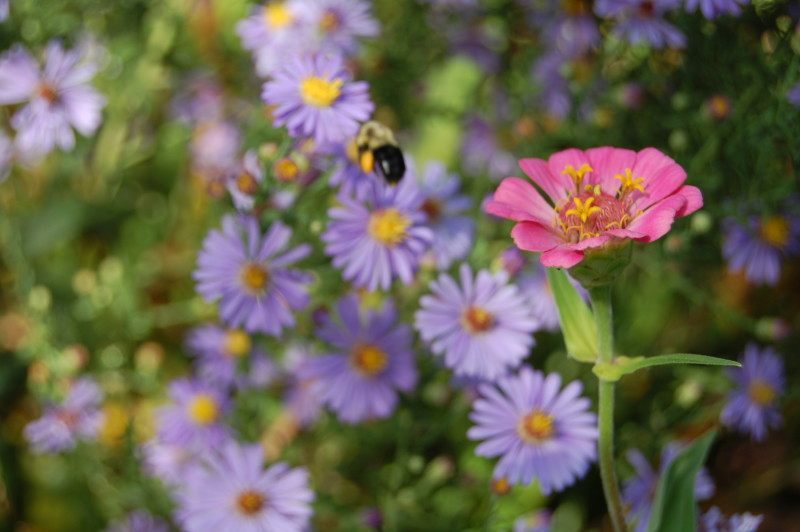
Photo by Melinda Hardy
Pinch back mid to late summer blooming perennials that tend to get leggy, such as Asters (above), Bog Sage, Daisies, Rudbeckia. This will prompt the plants to grow lateral stems and create a bushier plant with more blooms.
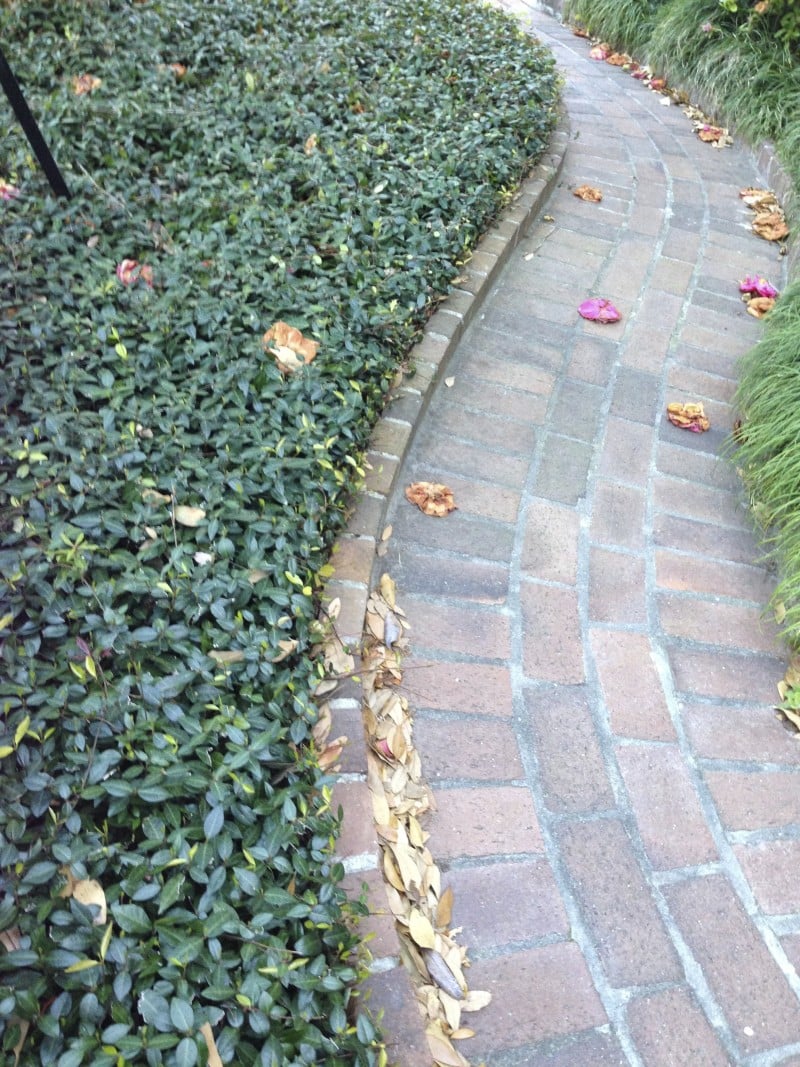
Keep Vinca minor (pictured above) and other aggressive ground covers pruned for a neat appearance.

Cut back to the ground any unproductive Hydrangea branches. An unproductive branch is one that has no or little growth, or is brittle to the touch.

Prune Climbing Hydrangea (Hydrangea petiolaris) after it finishes blooming. Prune other climbers to keep shape.
Climbing Hydrangea is not just for walls — it’s fun to let it scamper across a bed or a low stone wall.
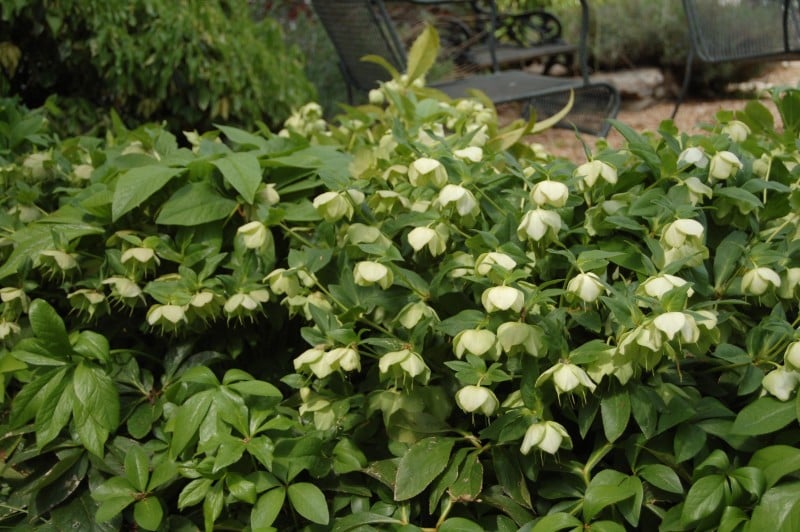
Cut to the ground browning leaves and spent flower stalks of Lenten Rose. Both Lenten Rose (Helleborus orientalis, above) and Stinking Hellebore (Helleborus foetidus, below) will generously self seed if not heavily mulched.
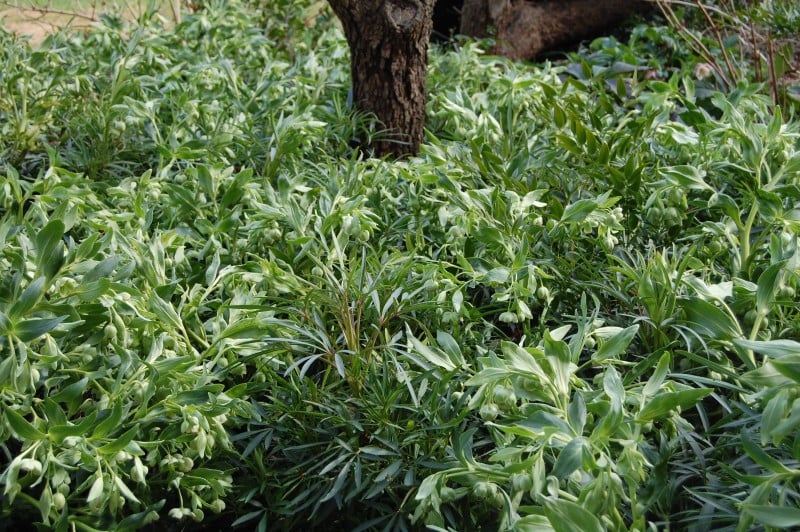
Prune evergreens, if needed.
Evergreen shrubs, such as Hollies, Laurels and Ligustrum, tend to generate uneven growth that can be straggly looking. It is fine to prune these shrubs now to shape them. A couple of caveats: don’t prune Magnolias or other evergreen shrubs blooming now, if you want to enjoy their blooms. Only prune Sasanqua (fall-blooming) Camellias in early spring before they begin forming flower buds.
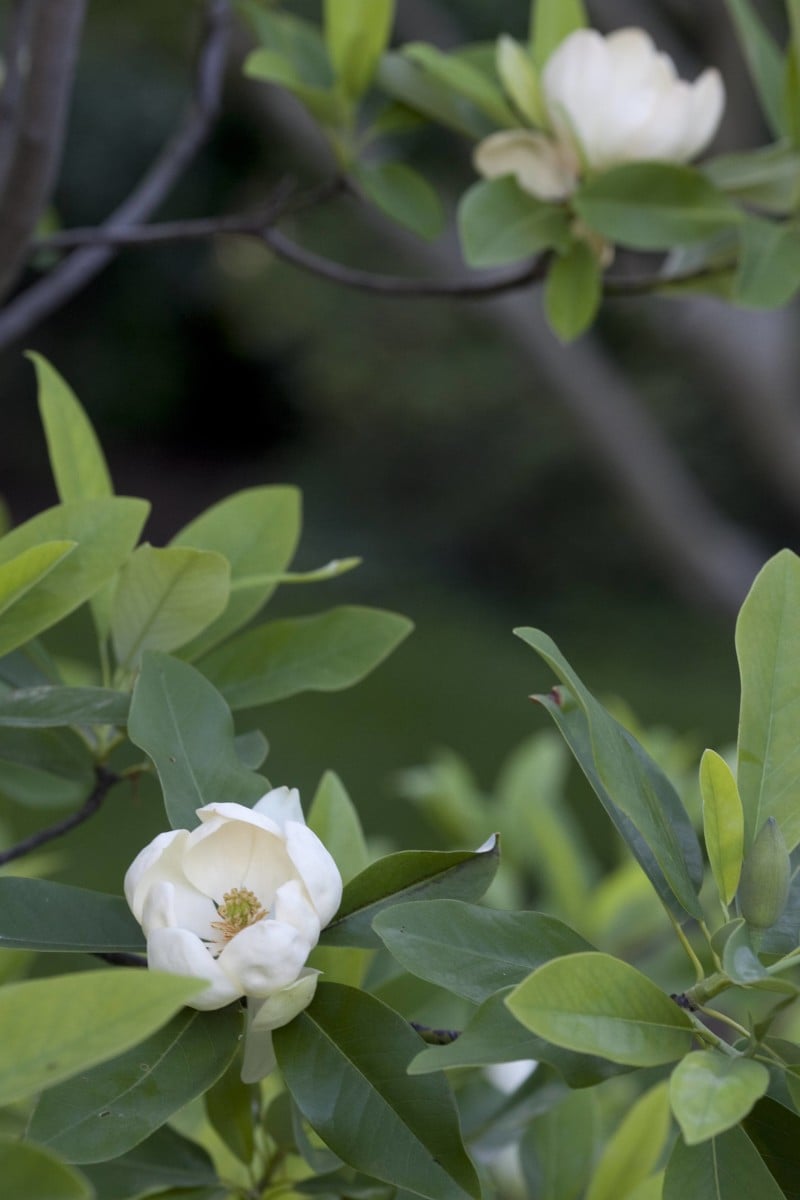
Prune multi-branch trees, such as Sweetbay Magnolias (Magnolia virginiana, above), Japanese Maple (Acer palmatum) and Serviceberry (Amelanchier, spp.) to open up the plant and assist in developing a beautiful shape, by cutting out any volunteer sports and straggly branches. You can also cut suckers and stragglies of Chaste Tree (Vitex agnus-castus), but don’t cut back main branches, as they will be blooming in the next month.
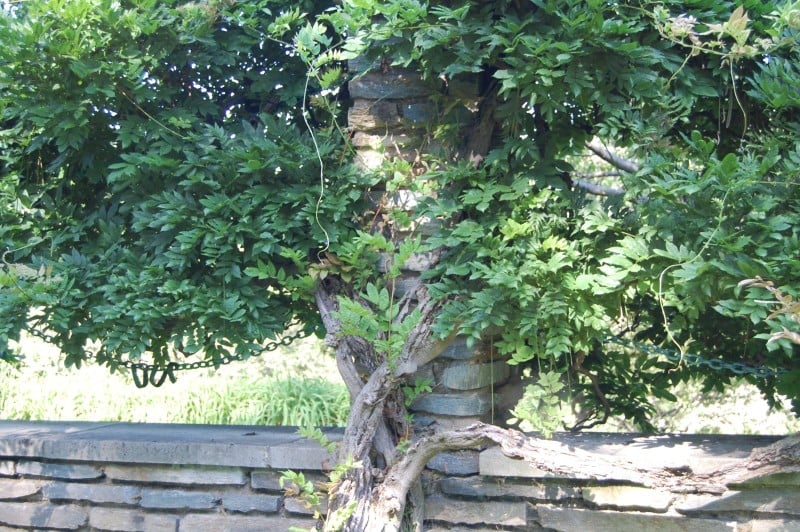
Prune Wisteria before it sets next year’s flower buds.
PLANT

Plant summer vegetables and herbs
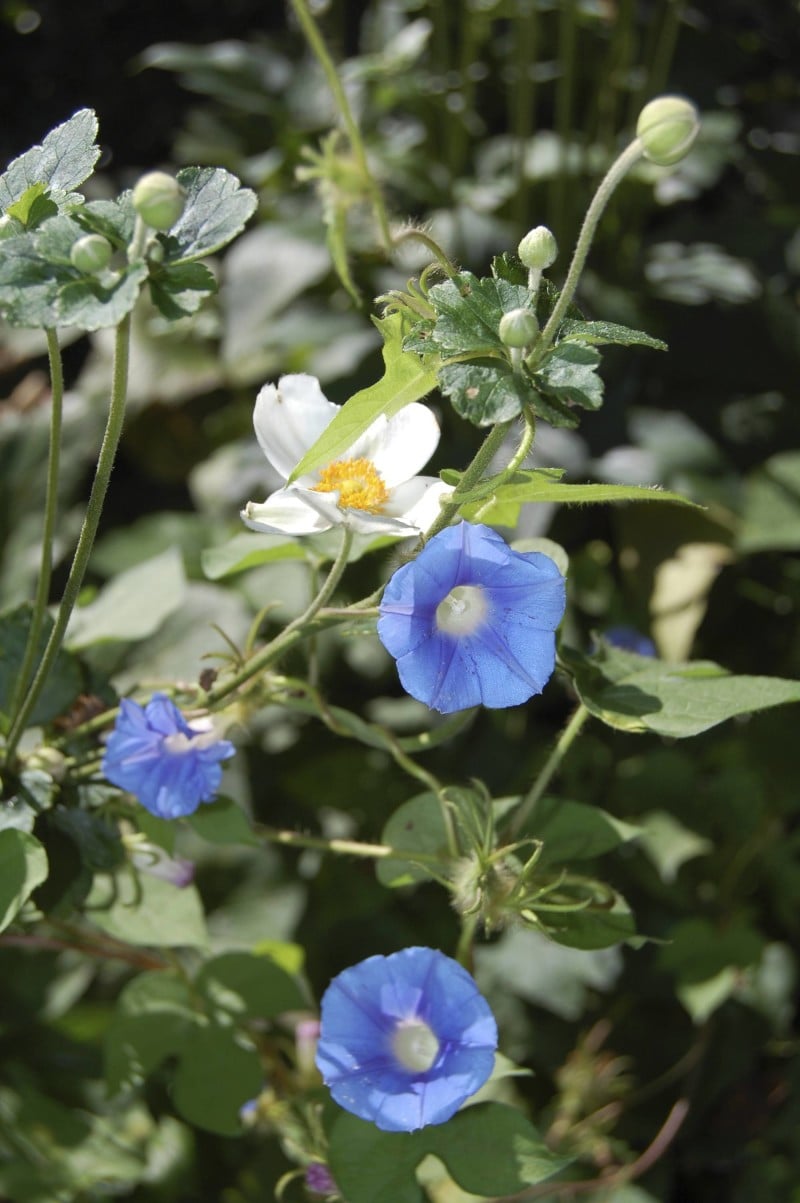
Consider planting Morning Glory seeds for old-fashioned late summer blooms. The vine twines through Japanese Anemone, above.
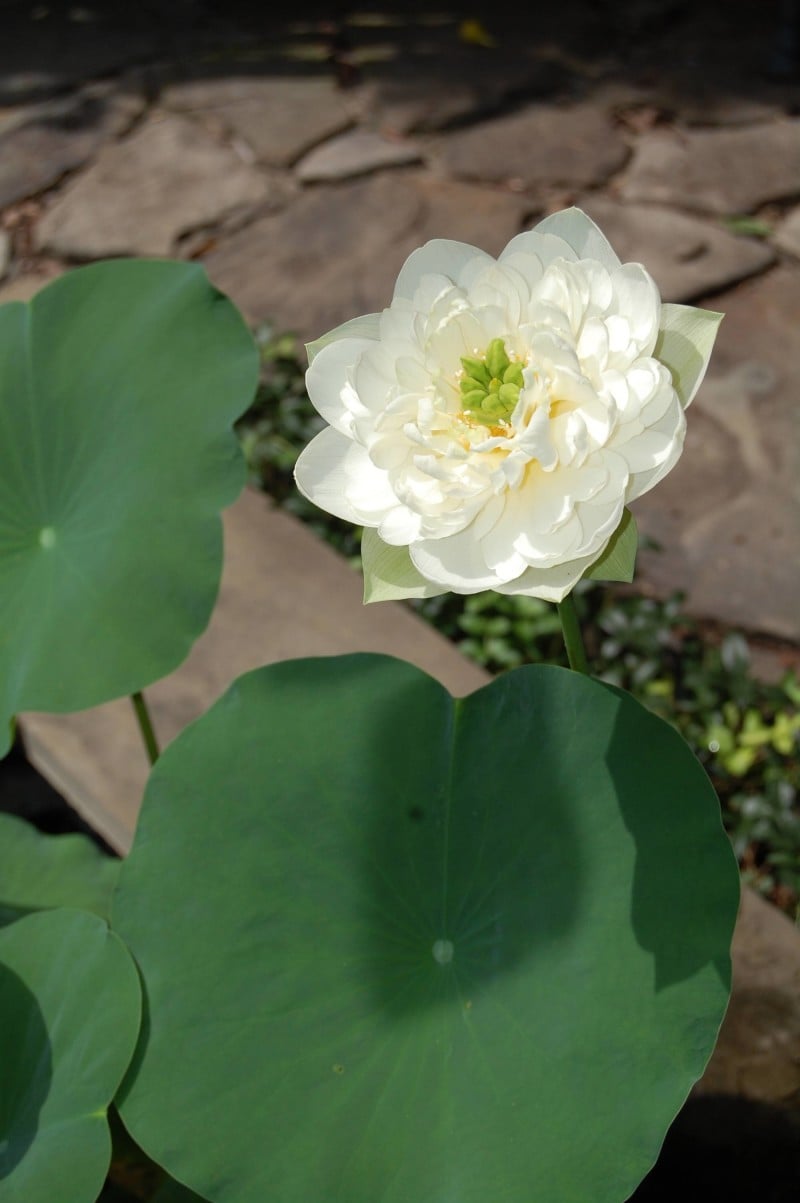
If you have a water garden, consider planting a Lotus (the native Nelumbo lutea).
I’d given mine up for dead and yanked the empty pot (empty except for mud) this spring. As usual, my procrastination (laziness?) saved a life. I went to toss the pot last week and, lo and behold, new Lotus leaves were emerging. Can’t wait to see it bloom like it did last summer, above.
Fill your containers with summer annuals,which will reward you until a hard frost. Be sure to regularly fertilize, as frequent watering depletes the nutrients from the soil. The window box below, on Meeting Street in Charleston, is filled with Begonia and Fern.
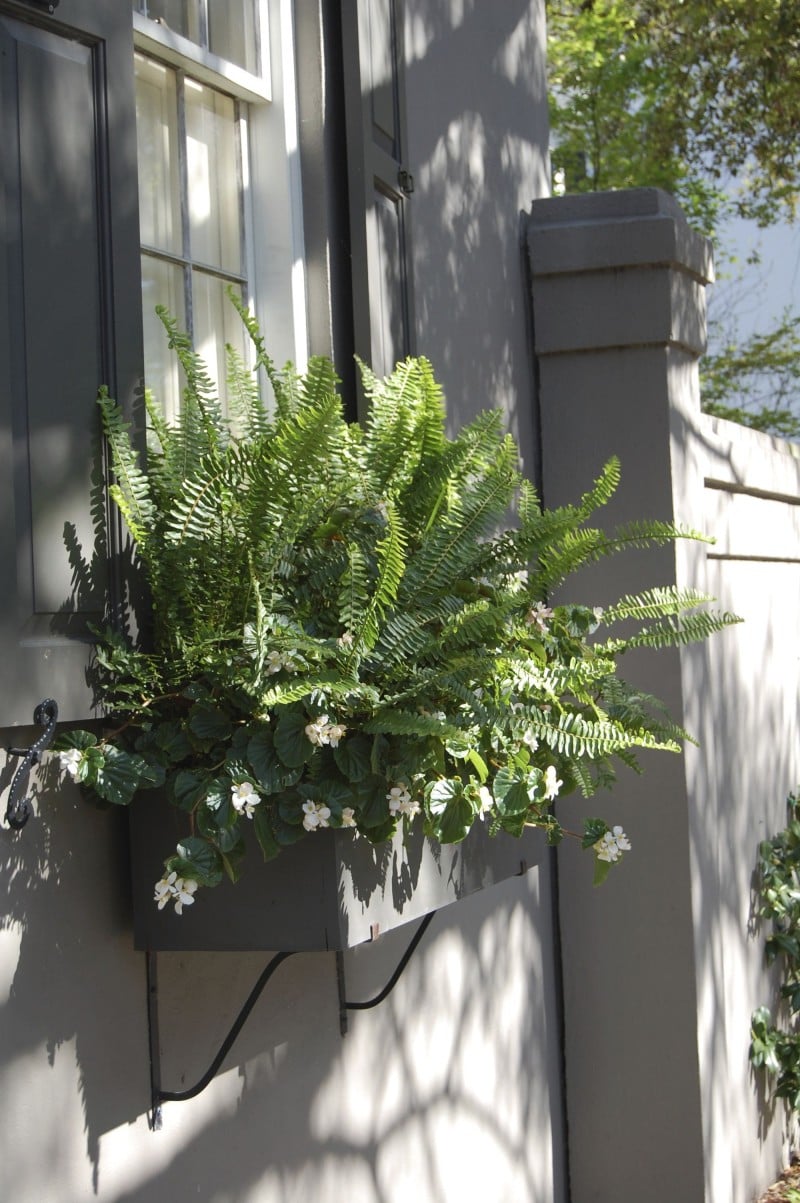
Add annuals to beds to replace plants that have gone dormant. New Orleans gardeners love to plant Caladiums in their otherwise evergreen borders for a shot of contrast. You can also plant masses of Lantana or Plumbago for color all summer. If you are planting in beds containing bulbs or dormant perennials, be sure not to disturb them.

EDGE
Edge your beelines and lawn borders. The person who tends the garden below is on top of it! Maintaining an edge between the lawn and pavement and between the lawn and planting beds helps keep the shape of the beds and prevents weeds from spreading.

WEED!!!!!!!!!!!!



